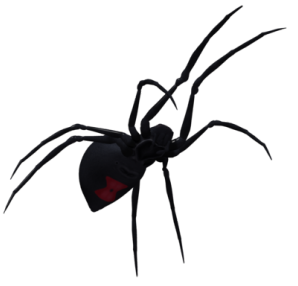The Acanthoscurria genus belongs to the Theraphosidae family and are native to various regions of South America, particularly Brazil.
One of the defining characteristics of the Acanthoscurria genus is its large size. These tarantulas are among the largest in the world, with leg spans that can reach up to 25 centimeters or more. Their bodies are robust and powerful, covered in dense, dark-colored hair that often features intricate patterns and coloration variations. These physical attributes contribute to their commanding presence and make them highly sought-after among tarantula enthusiasts.
Acanthoscurria tarantulas are renowned for their potent urticating hairs. These specialized hairs, found on their abdomen, can be released as a defensive mechanism when threatened. The urticating hairs cause irritation and discomfort upon contact with the skin or eyes of potential predators, providing the tarantula with a means of protection.
In terms of behavior, Acanthoscurria tarantulas are primarily terrestrial, inhabiting forest floors and burrowing in soil or leaf litter. They construct elaborate burrows, lined with silk, that serve as their retreats and hunting grounds. These tarantulas are opportunistic predators, feeding on a variety of prey, including insects, small rodents, and even other arachnids. They possess strong fangs that deliver venom to immobilize and digest their prey.
During mating season, male Acanthoscurria tarantulas display fascinating courtship rituals to attract females. These rituals often involve intricate leg movements, drumming on the ground or nearby objects, and other visual displays. If the male is successful, he will cautiously approach the female to mate. After mating, the female typically constructs an egg sac, which she guards diligently until the spiderlings hatch.
While Acanthoscurria tarantulas possess venom, they are generally considered non-aggressive towards humans. Bites from these spiders are rare and usually only occur when they feel threatened or provoked. Their venom, while capable of causing discomfort, is not considered medically significant to humans, except in rare cases of severe allergic reactions.
